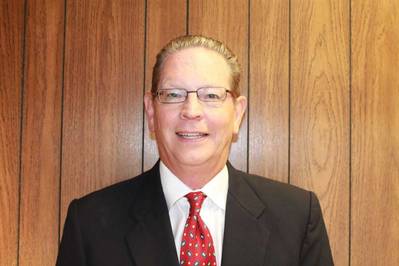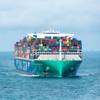Insights: Andrew Altendorf President, SCAA
Andrew Altendorf is the CEO and majority owner of Acme Environmental Inc. Acme’s history spans almost 50 years and the firm is recognized as a pioneer in the manufacture of oil spill containment booms and other oil spill recovery items. A U.S. Coast Guard classified OSRO, Acme and Altendorf support numerous customers in Oklahoma and the Midwest with their emergency response. He has been the President of the Spill Control Association of America since November of 2010. Prior to taking the reins as President, he served on the SCAA Board of Directors for 5 years. In this issue of MarineNews, Altenfdorf updates readers on the intricacies of spill response, the missions of SCAA and what that means to the firms that they serve, and mostly importantly, the environment itself.
For readers not necessarily familiar with the Spill Control Association of America and what it stands for, can you bring us up-to-speed?
The Spill Control Association of America (SCAA) was organized in 1973 to actively promote the interests of all groups within the spill response community. Headquartered in Alexandria, VA and acting as the “Voice of Spill Response Professionals”, SCAA represents a broad coalition of emergency responders, manufacturers and environmental firms who collectively address industry challenges, and work to strengthen and improve our nation’s response community. SCAA’s stated values include:
Make health, safety and environmental considerations a priority in the planning and implementation of our operations;
Provide quality products and reputable service, while responding safely and efficiently;
Participate with Government, customers and other stakeholders in creating responsible laws, regulations and standards to safeguard the community, workplace and environment; and
Recognize and support programs and services that have a direct impact on the quality of the global environment.
SCAA members include spill response contractors - Oil Spill Removal Organizations (OSROs), hazardous materials responders, companies that transport, store and dispose of oil and hazardous materials, remediation and site restoration services providers, manufacturers and distributors of response equipment and materials, spill managers and consultants, insurers, and government and training institutions.
Describe the process of spill response today. What, if anything can be tweaked to improve it?
It’s a good system, but there are always opportunities and challenges for improving the relationship. The Oil Pollution Act of 1990 (OPA 90) holds the spiller of oil or hazardous material responsible and accountable for mitigation, containment, recovery, and proper disposal. Our spill response industry is an essential component of that equation. Vessels and facility owners and operators who are required to have spill response plans and routinely exercise and tweak those plans, must identify their spill responders in the plans, under contract or other approved means. Improving spill response preparedness through training, drills and exercises help tweak the client-responder relationship, sharing knowledge and building trust and confidence in the client’s needs and responders’ capabilities. Every drill or exercise serves to prove or improve a spill response plan’s effectiveness. When a spill incident occurs, seeing a familiar face come walking through the door amid crisis and chaos can be very reassuring. Responder immunity is a very important aspect of OPA 90 that was severely tested during and after the 2010 Gulf of Mexico, Deepwater Horizon oil spill. The ensuing lawsuits against spill responders and manufacturers necessitate legislative changes to Responder Immunity that will support immediate and decisive response to future spill incidents. Without legislative change, the relationship between spill responders and their responsible party client is at risk of liability concerns and hesitation to respond immediately.
The issue of responder immunity for spill control professionals is a big issue. Where do things rest at present and what needs to be changed?
SCAA is a member of an industry coalition of companies and other industry associations that have proposed an amendment to the existing Responder Immunity legislation that will strengthen and broaden responder immunity. We understand not only is there support for our provision, but also that there may well be an effort to move/consolidate these bills for enactment of a maritime bill before the end of the year. Without beefed up legislation, our spill response industry is at risk for more frivolous lawsuits, costly litigation and less timely, cautious response in the future.
Spill Response R&D has arguably lagged in recent years, especially here in the United States, where it is difficult to get a permit to simulate a spill condition in the field. Are we doing enough, and if not, what can SCAA do to ramp up that effort?
SCAA took the issue of spill response research and development to Capitol Hill in March. R&D deficiencies were addressed in three major reports on the Deepwater Horizon oil spill incident: 1) Report to the President by the National Commission on the BP Deepwater Horizon Oil Spill and Offshore Drilling; 2) the Incident Specific Preparedness Review (ISPR) Report on Deepwater Horizon; and 3) the Joint Industry Task Force on Oil Spill Preparedness and Response Force Report. The National Commission Report specifically recommends that “Congress should provide mandatory funding for oil spill response research and development and provide incentives for private-sector research and development.” The Deepwater Horizon ISPR Report specifically recommends that “the Coast Guard should seek to increase the level of funding for the Interagency Coordinating Committee on Oil Pollution Research (ICCOPR) from the Oil Spill Liability Trust Fund to develop national oil spill response research priorities.” Government and Industry must jointly support R&D efforts to improve our preparedness and ability to effectively respond to oil and hazardous materials spill incidents in the future. Some R&D progress is being made. One of our SCAA member companies was awarded the Wendy Schmidt funded Million Dollar X-Challenge for designing an oil recovery skimming system that met and exceeded the targeted gallons per minute oil recovery capacity and percentage of oil content. The American Petroleum Institute has established 23 R&D workgroups to address priorities for coordination and funding with ICCOPR involvement. There is a continuing effort to get U.S. approvals for a controlled oil spill offshore facility for testing of spill response equipment and materials in a manner similar to what is being done in Norway. There is a big difference in testing equipment under a protocol in a test tank and testing equipment in the real operating environment.
What’s the most pressing issue on your plate today and why?
Responder Immunity is a high priority, front burner issue directly affecting our spill control members. We are also very concerned with the growth trend in Federal and State regulations that place greater physical and monetary burden on our industry. Many of our members are small businesses who are struggling under the current economy and are looking for relief, not additional burden.
As commercial activities increase in the Arctic, do we today have enough response capabilities up there? Where does SCAA fit into that equation?
Several of our SCAA members have stepped up to the plate to provide spill response coverage, equipment testing and consulting services in the Arctic. In August, one of our equipment manufacturers was in Alaska testing his latest skimming system designed for ice operating environments. Another member has spent the last four months working with Shell on oil spill response planning for drilling operations just now starting. Other SCAA members offer spill response coverage in Alaska. We and our sister association, the Association of Petroleum Industry Cooperative Managers (APICOM) who have all of the Alaska Co-Ops as members, closely collaborate and discuss Arctic response issues and formally meet with the U.S. Coast Guard as a USCG-SCAA-APICOM ‘Partnership Action Team”. The remoteness, logistical requirements and operating conditions in the Arctic pose a challenge to companies involved in oil and gas exploration and production and operating commercial vessels. As more E&P licenses are issued and traffic increases, the need for spill response preparedness also increases. Oil and gas companies operating in Alaska are making a good effort to meet the challenge in terms of response vessels, equipment and trained personnel to achieve greater spill response preparedness and capability. SCAA and its member companies are keeping a close eye on Alaska developments and will be prepared to provide spill response services.
How can we improve our ability to recover oil? What’s the biggest advance in this field in recent memory?
The biggest advances include the more effective utilization of the National Incident Management System (NIMS) in managing spills and the greater acceptance and use of dispersant application and in-situ burning to complement mechanical recovery. We need to promote new technology with R&D funded projects, use all the tools in the tool bag, and improve the logistics of spill response. We study and wrestle with the concept of an Effective Daily Recovery Capacity (EDRC) as planning criteria for our ability to recover oil. We need a broader systems approach in which the derated recovery capacity of a skimming system is only one component. Improvement will involve the combined strategy and tactics of mechanical recovery, dispersant application and in-situ burning. Effectively combating oil spills in the future will involve rapid response to the spill site, finding and better tracking of the oil with oil detection technology, increasing the oil encounter rate by extending the active oil recovery and encounter hours per day, increasing temporary storage of recovered oil at the site, and minimizing the turnaround time and time away from the frontline for crew and equipment changes, offloading recovered oil, refueling, and re-provisioning, just to list a few factors.
(As published in the September 2012 edition of Marine News - www.marinelink.com)














